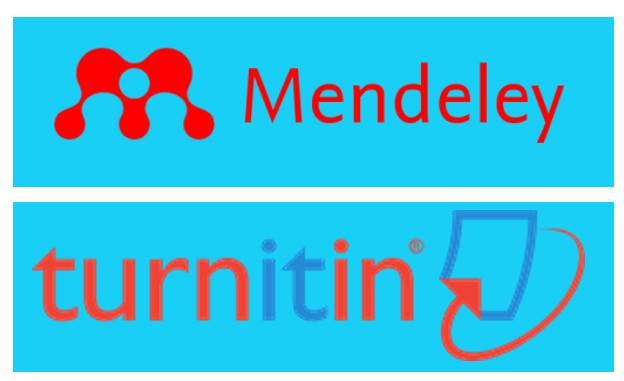Mastery of Kanji Character Meanings through Visual Image Methods among Japanese Language Learners in North Sumatra
DOI:
https://doi.org/10.32734/v6qvb717Keywords:
Visual Image, Japanese Language, Kanji Meanings, KanjiAbstract
This study aims to investigate the difficulties Japanese language learners face in understanding and mastering the meanings of kanji characters, as well as to evaluate the effectiveness of the image-based visual method in helping learners comprehend and master kanji. A qualitative approach with a descriptive method was employed in this study. The data were collected through pre-tests and post-tests administered to 12 Japanese language learners at Universitas Harapan Medan. The results indicate that prior to the image-based visual learning method, students encountered difficulties in mastering the meanings of kanji characters. The pre-test scores revealed challenges in recalling the meanings of kanji, the correct order of strokes, and the pronunciation associated with kanji. However, after the implementation of the image-based visual learning method, there was a significant improvement in the post-test scores. The average score increased from 37.92 in the pre-test to 80.42 in the post-test. Based on these findings, it can be concluded that Japanese language learners struggle to master kanji meanings. However, the image-based visual learning method proved effective in helping them understand and master kanji, with significant improvements observed. This learning method helped learners recall and understand kanji characters and overcome the difficulties they faced previously.
Downloads
References
Fitriana, R. (2019). Strategi pembelajaran kanji dasar menggunakan metode mnemonic dan happyou di Program Studi Sastra Jepang FISIB Universitas Pakuan. Media Bahasa, Sastra, Dan Budaya Wahana, 25(2), 1–11. https://doi.org/10.33751/wahana.v25i2.1598
Fitriani, I., & Ginanjar, P. Y. (2022). Strategi dalam Meminimalisir Kesulitan Pembelajaran Kanji. IZUMI, 11(2), 236–247. https://doi.org/10.14710/izumi.11.2.236-247
Gapur, A., & Mulyadi, M. (2018). Lexical Field of ‘Saying’ on Japanese Lexeme IU. JAPANEDU: Jurnal Pendidikan Dan Pengajaran Bahasa Jepang, 3(2), 108–120. https://doi.org/10.17509/japanedu.v3i2.11442
Gapur, A., & Taulia. (2023). Japanglish: The Benefits of English Proficiency for Japanese Language Students’ Vocabulary Acquisition in North Sumatra. International Journal of Cultural and Art Studies, 7(1), 41–48. https://doi.org/10.32734/ijcas.v7i1.11868
Lensun, S. F. (2017). PENINGKATAN PENGUASAAN KANJI DENGAN MET ODE NEMONIK MELALUI MULTIMEDIA. BAHTERA : Jurnal Pendidikan Bahasa Dan Sastra, 15(1), 107–117. https://doi.org/10.21009/BAHTERA.151.010
Moleong, L. J. (2014). Metode Penelitian Kualitatif (Edisi Revisi). PT. Remaja Rosdakarya.
Mori, Y. (2020). Perceptual differences about kanji instruction: Native versus nonnative, and secondary versus postsecondary instructors of Japanese. Foreign Language Annals, 53(3), 550–575. https://doi.org/10.1111/flan.12480
Paxton, S., & Svetanant, C. (2013). Tackling the Kanji hurdle: Investigation of Kanji learning in Non-Kanji background learners. International Journal of Research Studies in Language Learning, 3(3). https://doi.org/10.5861/ijrsll.2013.519
Pujiono, M. (2022). Interferensi Leksikal Bahasa Indonesia Terhadap Bahasa Jepang (Studi Kasus Pada Mahasiswa Bahasa Jepang Di Indonesia). Pustaka Aksara.
Rasiban, L. M. (2013). Penerapan Student Centered Learning (SCL) melalui metode mnemonik dengan teknik asosiasi pada mata kuliah kanji dasar. Jurnal Pendidikan Bahasa Dan Sastra, 13(2), 180. https://doi.org/10.17509/bs_jpbsp.v13i2.290
Rose, H. (2017). The Japanese Writing System. Multilingual Matters. https://doi.org/10.21832/ROSE8156
Sudjianto, & Ahmad, D. (2014). Pengantar Linguistik Bahasa Jepang. Percetakan KBI.
Sutopo, H. B. (2006). Metodologi Penelitian Kualitatif: Dasar Teori dan Terapannya dalam Penelitian (edisi kedu). Universitas Sebelas Maret.
Visiaty, A., & Yulianti, V. (2013). Strategi Pembelajaran Kanji : Studi Kasus pada Pembelajar Bahasa Jepang Tingkat Pemula dan Menengah di Universitas Al Azhar Indonesia. JURNAL Al-AZHAR INDONESIA SERI HUMANIORA, 2(1), 46. https://doi.org/10.36722/sh.v2i1.116
Yulia, N. (2023). Meningkatkan Kemampuan Menulis Kanji Dasar Melalui Gambar Piktogram. Implementasi Scientific Approach, Case Method Dan Project Based Learning Dalam Pembelajaran Bahasa Jepang. https://proceedingsminasan.fbs.unp.ac.id/index.php/minasan/article/view/50
Downloads
Published
Issue
Section
License
Copyright (c) 2024 Khairunnisa Nur Hasanah, Dea Nadilla Febrianti, Tengku Cinta Zanice Syah, Desyca Putri Tiara Simanjuntak, Taulia, Muhammad Yusuf (Author)

This work is licensed under a Creative Commons Attribution 4.0 International License.
- Authors agree to publish their work under the Creative Commons Attribution 4.0 International (CC BY 4.0) license.
- Authors retain copyright to their work and may reuse or distribute it.
- HUMANIOLA reserves the right to request revisions and make final publication decisions.
- Authors are responsible for ensuring that their work does not infringe upon third-party copyrights.
- Archiving in digital repositories may be done for long-term access and preservation.






